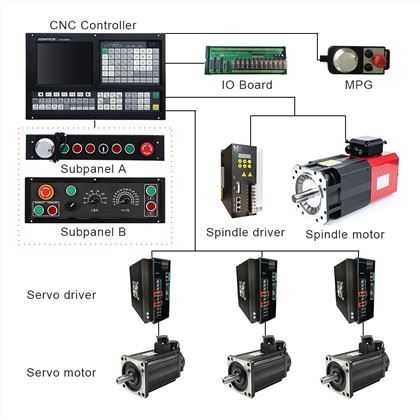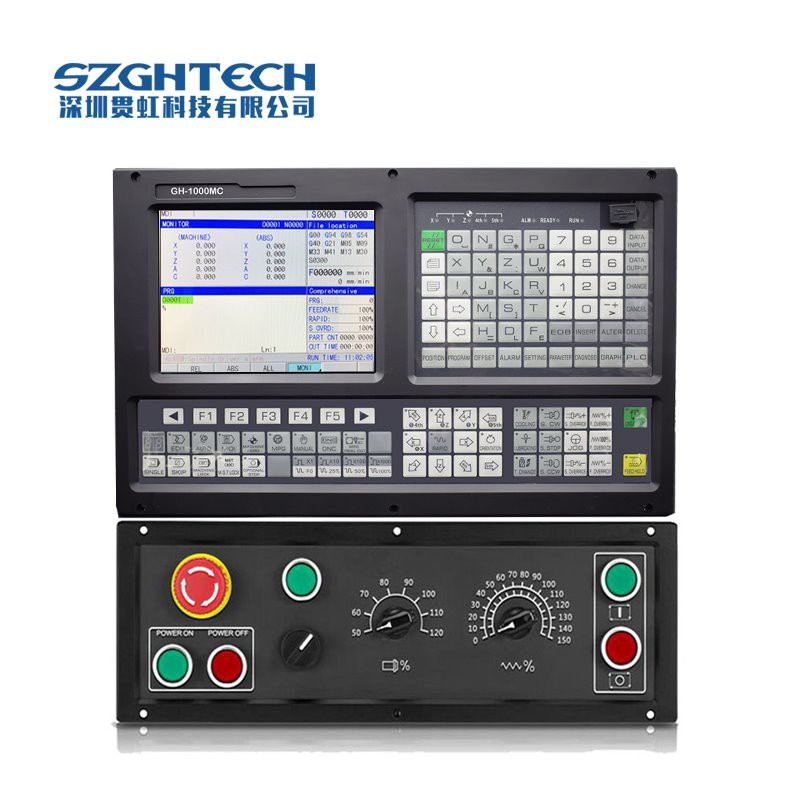
| Number of control axes | 3 axes |
| Minimum programming | 0.001mm |
| Maximum programming | ± 99999.999mm |
| Top speed | 30m / min |
| Feed speed | 0.001-15m / min |
| Manual continuous | One axis or simultaneous multi-axis |
| Screen saver function | Screen saver function |
| Program editing | Male / English, relative / absolute programming |
| Pre-reading function | Short line preprocessing 10,000 lines |
| Compensation function | Knife compensation, between compensation, screw compensation, radius compensation |
| Communication function | RS232, U disk interface |
| Program editing | Male / English, relative / absolute programming |
Tool functions: | 1)Tool length compensation |
| Program storage and editing | 1) Full-screen editing; program capacity: 40M, 10,000 programs (including subprograms, macro programs) 2) MDI allows input and operation of 8 program segments 3) Support macro program/subprogram call, allow 4-fold subprogram nesting 4) Calculator, online programming wizard |
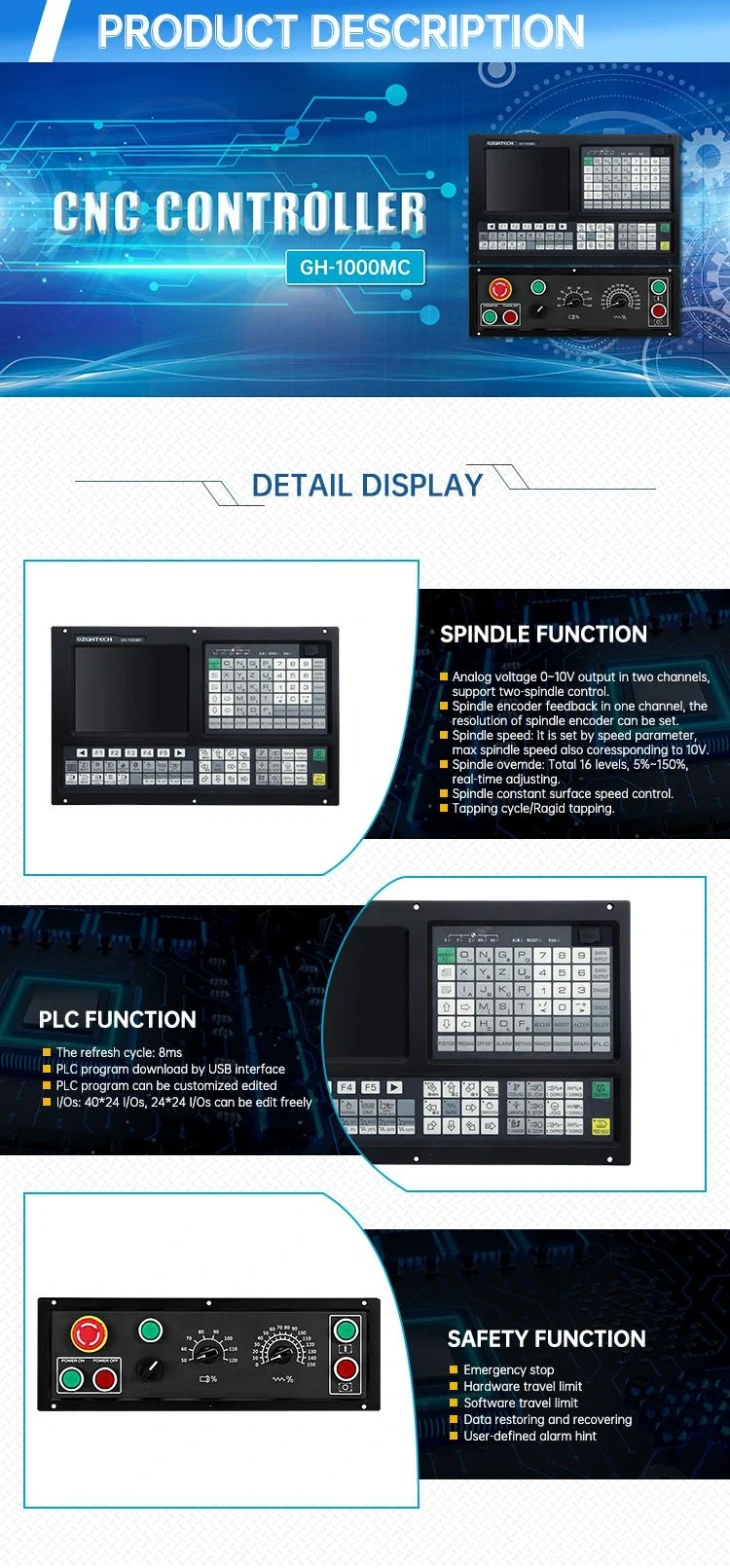
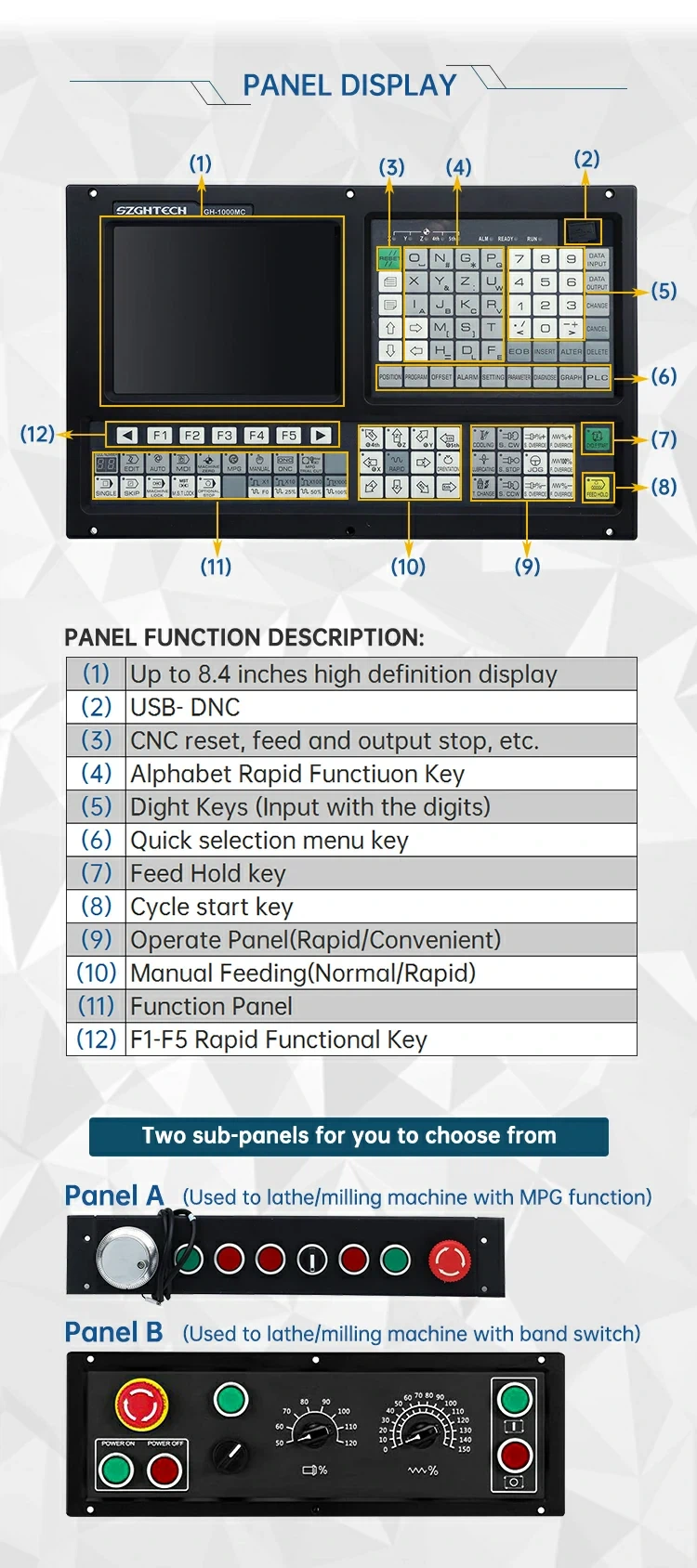
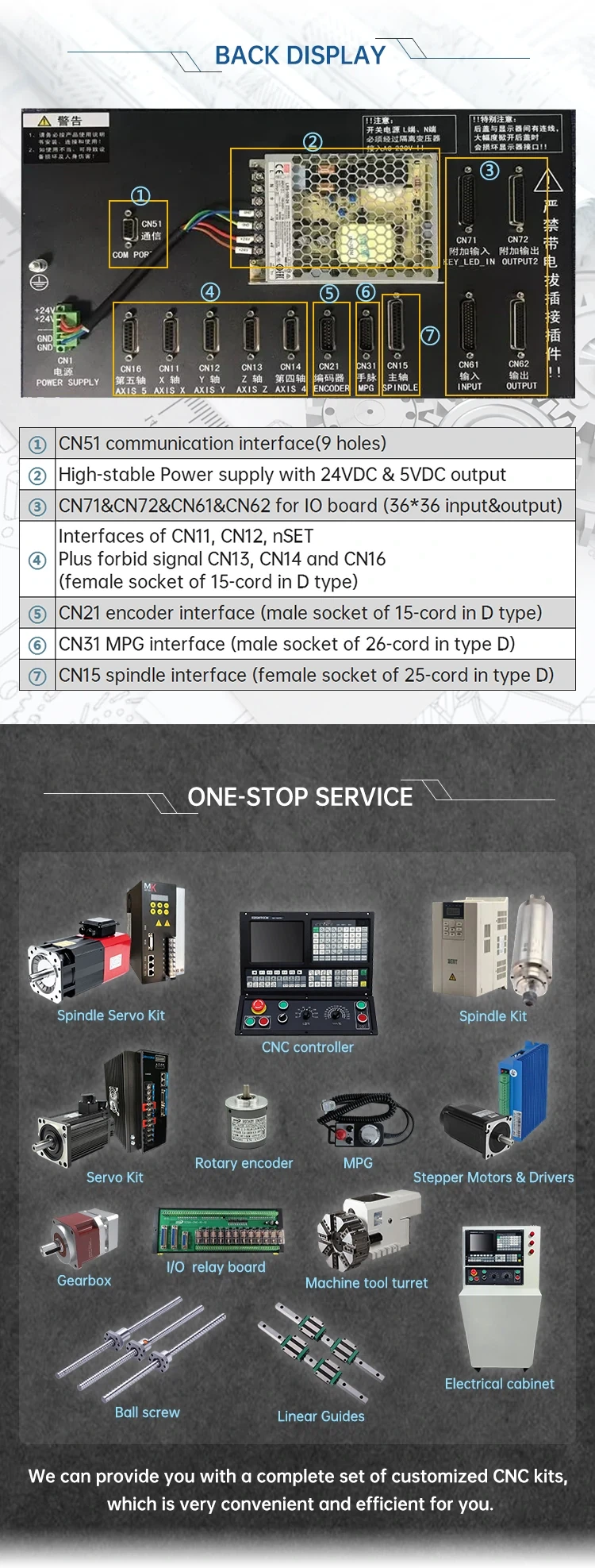
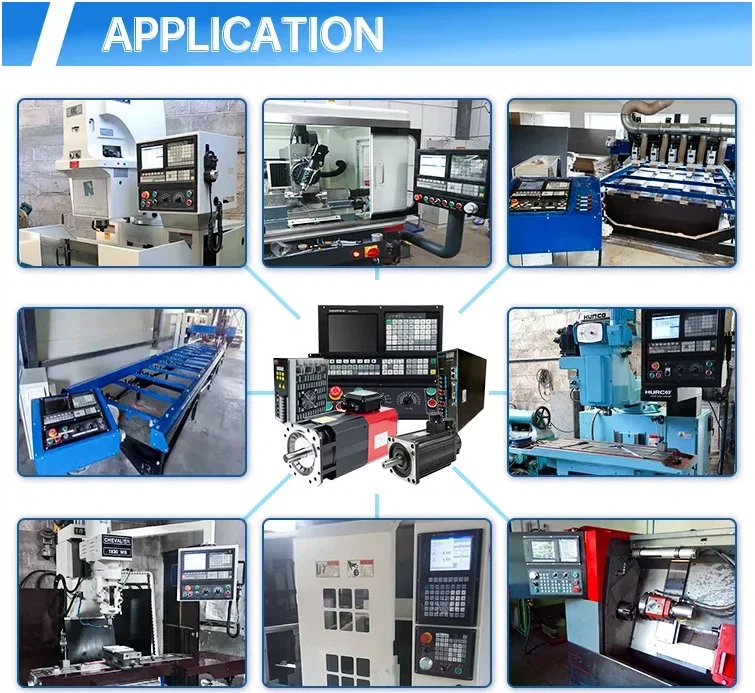
Technical features:
1) Dedicated interface for automatic tool setting;
2) Row drilling tool function;
3) Smooth start and stop, high speed machining.
![)Z`PFQB]3PVFMA$_NE60N{5](/Content/uploads/2022748886/20220715161744a2ee39bc4e1c449393eef342f8ed0c52.png)
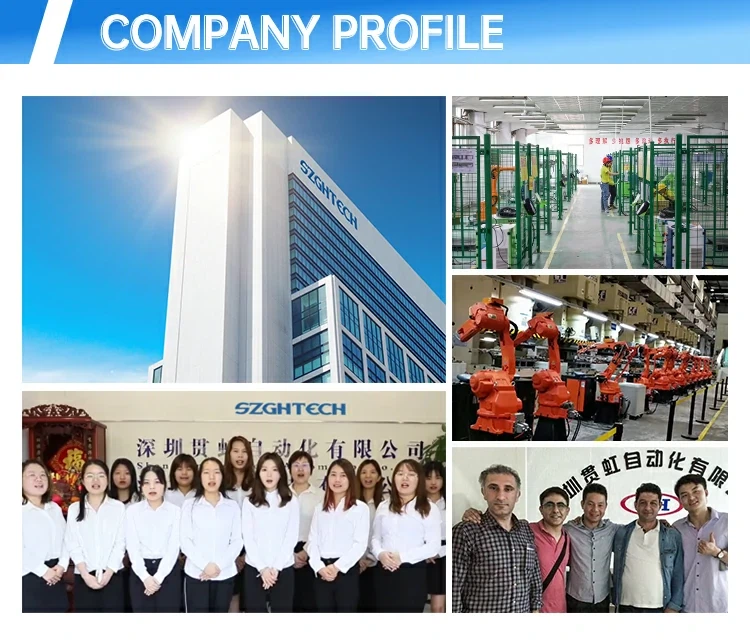
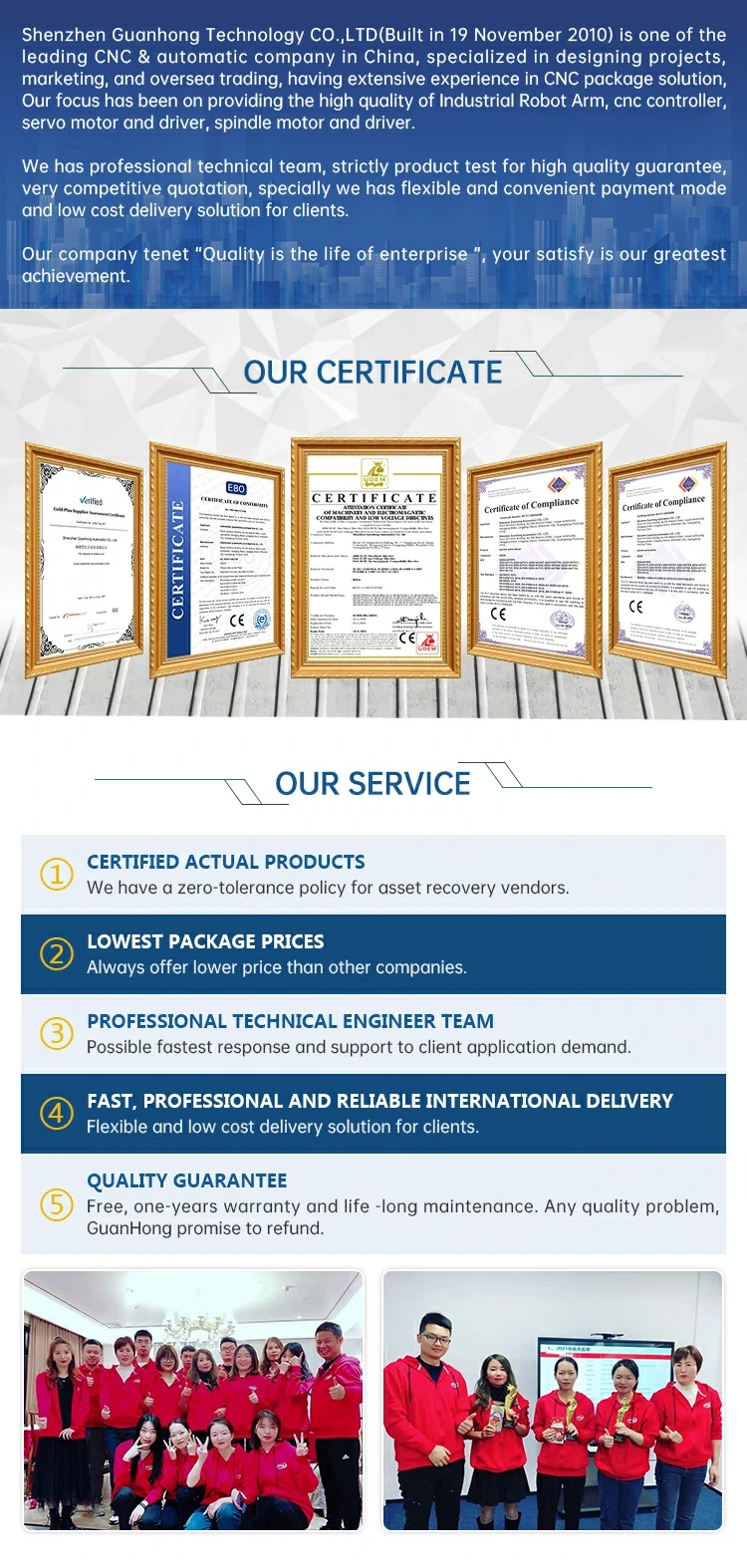
FAQ
Q1: How about the packing when they are sent out?
We usually use foam paper to fill all the areas inside the box to protect the parts. We often pack the parts in cardboard boxes, but if the parts are too heavy, we make wooden boxes for them.
Q2: What deliveries are available?
UPS, DHL, FEDEX, TNT and EMS are available.
Q3: How do you guarantee the quality?
A: We have the professional engineer to test the goods and make sure they are 100% working before they are dispatched.
If you have any questions, pls feel free to contact us. We'll be sure to get back to you within an hour on a business day.


